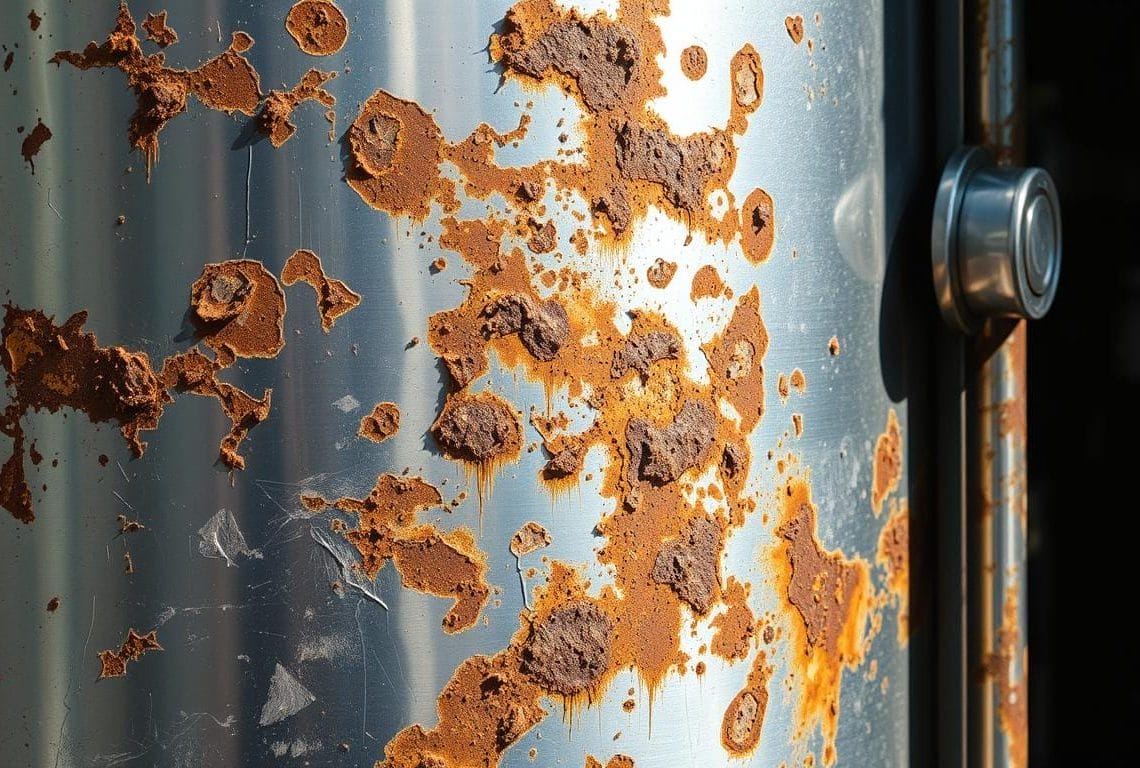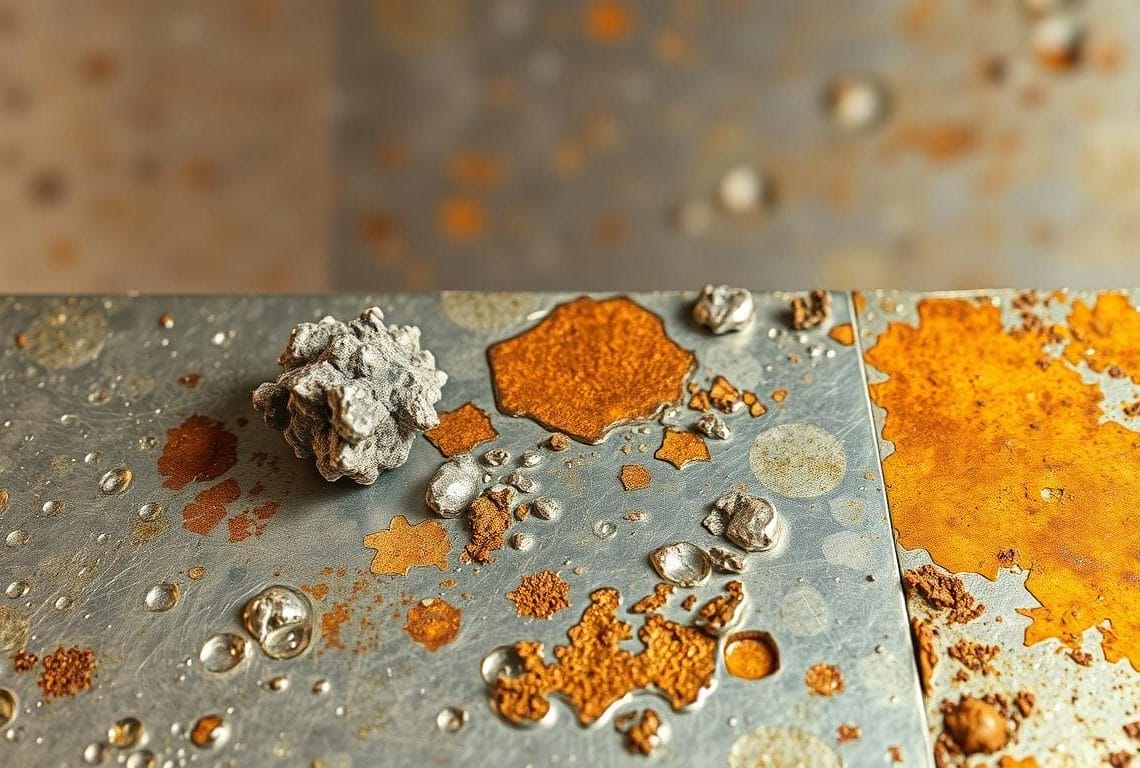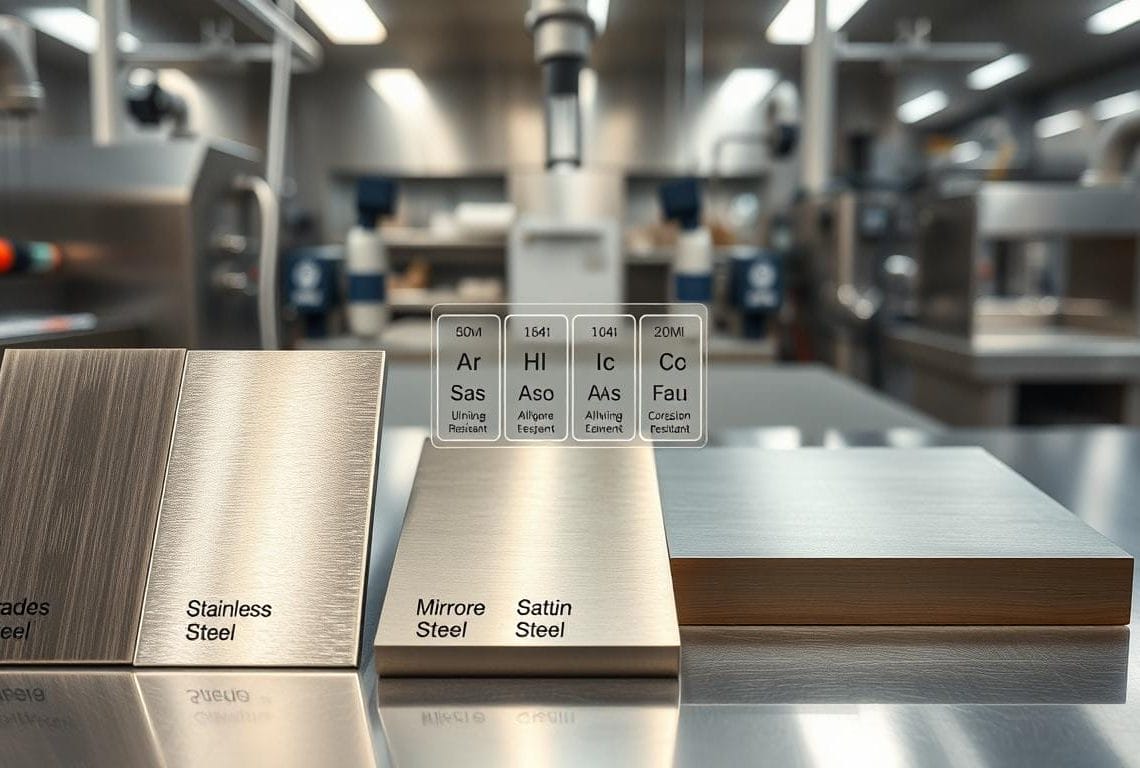Can a metal known for lasting shine actually fail under familiar conditions? This question drives every homeowner and metalworker who picks a grade for outdoor gear, kitchen products, or structural parts.
The answer is nuanced: stainless steel offers strong corrosion resistance, but it is not immune. As an iron-based alloy with chromium and other elements, it forms a thin oxide layer in the presence of oxygen. That layer protects the surface and keeps rust at bay when conditions stay normal.
Real risks appear with salt, harsh chemicals, trapped moisture, grease, and high heat. Edges, welds, and damaged finishes are vulnerable spots. This introduction previews how to pick the right grade, design to avoid crevices, and apply coatings or sprays to extend life.
For a deeper look at practical fixes and when to seek pros, follow this guide or visit a focused resource like this detailed reference.
Understanding why stainless steel resists corrosion in the first place
Corrosion resistance begins where metal meets air—through a self-made protective film.
The chromium oxide passivation layer
Chromium in the alloy reacts with oxygen at the outermost surface to form a thin chromium oxide film. This oxide layer is transparent and blocks iron below from oxidizing further.
How the film repairs and when it fails
The layer is self-healing: small scratches re-passivate if air is available. Severe attacks—high chloride, limited oxygen, or heavy contamination—overwhelm the process and start localized corrosion.
Temperature, surface condition, and alloy makeup
High temperature can discolor or alter the film but does not always remove protection. Embedded debris, welds, or rough finishes create start points for attack. The percent of chromium and other elements in the alloy and the manufacturing process set how robust the properties are.
- Inspect finishes regularly.
- Keep surfaces clean and ventilated.
- Choose appropriate grades for harsh environments.
Does stainless steel corrode in real-world conditions?
Everyday conditions — from pool spray to kitchen splashes — can erode protective performance over time.

Common triggers: standing water, splashes from salt-laden air, and spills of aggressive chemicals speed up damage. Grease and grime trap debris and moisture against the surface and create under-deposit attack that looks like spotty rust.
Prolonged exposure to elevated temperature or direct heat also speeds reactions. Heat-tinted welds and nearby metalwork may lose chromium locally and show early discoloration.
General corrosion vs. localized attack
General corrosion appears as widespread discoloration across a panel or component. It usually follows sustained chemical contact or poor cleaning routines.
Localized attack shows as pits, crevices, or edge spots. These weak points start where oxygen is limited or debris collects. Early detection helps prevent spread and more costly steel corrosion.
- Check high-risk applications: kitchens, poolsides, coastal railings, and plant floors.
- Rinse after salt contact; remove spills quickly and wipe dry to preserve resistance.
- Document materials, exposures, and products in use to guide future grade selection.
Specialized types of corrosion to watch for with stainless steels
Not all surface damage follows the same path—there are distinct failure modes to watch. Spotting the pattern helps pick fixes that work and materials that last.

Pitting corrosion: chloride attack and oxygen-poor pockets
Pitting corrosion begins when chlorides concentrate in a tiny gap or pit and breach the protective oxide layer. Once the film breaks, narrow, deep pits form and can undermine strength quickly.
Prevention: choose molybdenum-bearing grades and keep surfaces aerated and clean to slow pit growth.
Crevice corrosion: trapped salts and blocked regeneration
Crevice corrosion appears in joints, gaskets, and under deposits where oxygen is scarce. Chloride buildup prevents the oxide layer from re-forming and starts localized attack.
Control: design for drainage, use suitable gasket materials, and grind smooth welds to reduce crevice risks.
Galvanic corrosion, weld decay, and galling—short diagnostics and fixes
- Galvanic corrosion: occurs when dissimilar metals contact in moisture. Isolate fittings, balance contact area, or pick compatible pairings to limit attack.
- Weld decay: heating near 550–850°C can precipitate chromium carbides at grain boundaries. Use low-carbon grades (304L/316L), stabilizers (Ti/Nb), and proper heat treatment after welding.
- Galling on fasteners: adhesive wear shows as damaged threads on disassembly. Prevent with correct lubricants, matched or dissimilar grade pairings, and proper torque.
Quick checks: look for pinhole craters (pitting), rust halos in creases (crevice), or attack near dissimilar fittings (galvanic). Early intervention—rinsing after salt exposure and routine fastener inspection—preserves resistance and cuts replacement costs.
Choosing the right stainless grade and composition for your application
Choosing the correct grade begins with a clear map of the chemicals, temperatures, and service conditions involved.

Chemical match matters: select 316 or 317 for phosphoric and sulfuric at low concentrations. Use 904 when sulfuric exposure is concentrated. For nitric acid, 304L or 430 are good choices.
Chemicals: acids, bases, and organics
Avoid hydrochloric acid with these alloys—brief contact can trigger rapid failure.
Weak bases are often tolerated, but strong alkalis and chloride oxidizers (for example, sodium hypochlorite) require caution and verification.
For organic chemicals, 300-series grades usually perform best, though temperature and oxygen change results.
Temperature, oxygen, and surface finish
Higher temperature and stagnant, low-oxygen environments raise risk. Ensure aeration in tanks, piping, and enclosed products.
Smoother finishes reduce initiation sites. Specify compatible polishing or passivation to improve corrosion resistance and ease cleaning.
Balancing alloy content, cost, and verification
- Balance chromium, molybdenum, and controlled carbon to meet life-cycle needs and budget.
- Use trial coupons or consult a metallurgist for mixed-chemical or variable-temperature applications.
- Document materials, cleaners, and process steps to support repeatable selection for future applications.
How to prevent and remove rust on stainless steel today
Good drainage, regular cleaning, and smart material pairing are the best first defenses. Start by designing to shed water: slope, drain, and avoid trapped pockets so the protective oxide layer can regenerate.

Preventive measures and design
Design and maintenance: slope surfaces, clear gaps, and ensure air circulation to help the oxide layer recover after contact with contaminants.
Isolate dissimilar metals: use nonconductive separators or sealants at joints to limit galvanic attack in outdoor or humid applications.
Coatings and inhibitor choices
Apply polyurethane or epoxy top coats as a barrier for high-touch or coastal products. Use commercial corrosion inhibitor sprays on fittings during scheduled maintenance.
For process guidance and product tips, see a practical guide on rust prevention and removal.
DIY and shop methods
Light rust: paste vinegar, baking soda, and salt; scrub with lemon plus salt; or try ketchup mixed with washing soda. Rinse and dry thoroughly.
Moderate cases: use Iron OUT, CLR, or WD‑40 Rust Remover following label times and spot tests.
Industrial-scale fixes
Severe damage needs wire-wheel brushing, grinding, sandblasting, or controlled chemical soaks. Test a small area, track dwell time, and finish by rinsing to preserve the surface.
- Work methodically—avoid cross-contamination of tools and rags.
- Build a schedule: rinse after salt exposure and reapply coatings seasonally for long-term protection.
- For deeper reading on whether metal will rust in specific conditions, consult this technical overview: will stainless steel rust?
Putting it all together for long-lasting stainless performance
Practical choices in grade, design, and care form the best defense for long-term performance. Choose the right grade and alloy for the application, design to avoid crevices and poor contacts, and protect the chromium oxide layer through cleaning and coatings.
Watch for key risks: chlorides, stagnant moisture, heat at welds, and dissimilar metal contact. Inspect regularly for early signs of pitting corrosion, crevice attack, or galvanic staining near fittings.
Specify low‑carbon grades and proper heat treatment for welded joints. Rinse after salt exposure, dry promptly, and reapply protectants on a set cadence to preserve corrosion resistance.
Record cleaners, exposures, and service intervals to refine choices. For related material notes — including magnetic behavior — see this quick guide: magnetic properties.






